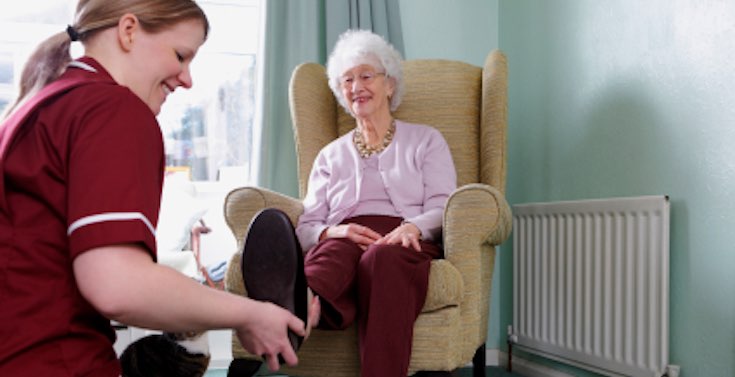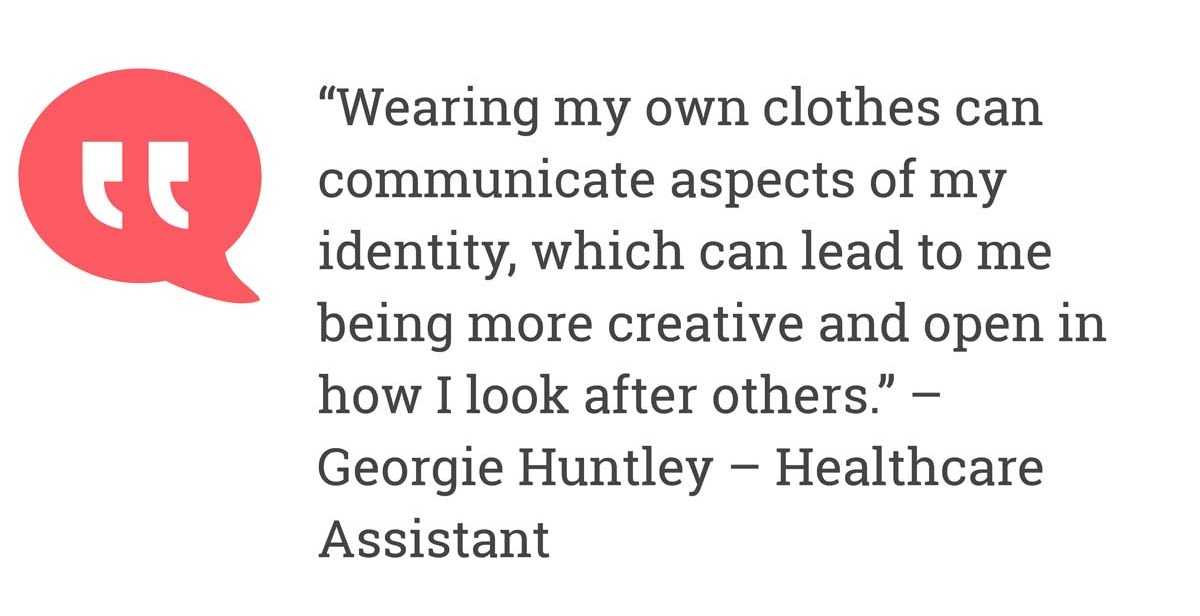 "Should care workers have to wear a uniform?"
"Should care workers have to wear a uniform?"Is wearing a uniform when working as a carer necessary? If so, should the wearing of uniform be required by law or should individual institutions determine their own policy?
We previously published an article entitled ‘Should we wear uniforms in care work?’. A reader recently commented: ‘I have come across a care home where wearing leggings is not allowed because it is ''unprofessional'. What do you think? Comment 💬 Like ❤️ Reply 🙂 below. Is there, or should there be a requirement for a certain ‘professional’ uniform provision in care homes?
In the original article, Georgie, the writer says that when she worked in a dementia care home, bright clothes and bold patterns were encouraged in order to give the residents visual stimulation and possibly relieve the agitation that can be present as a symptom in dementia sufferers.
Do you think such possible health benefits outweigh the need for ‘professional’ work uniform?
If no formal uniform is provided, is there such a thing as ‘unprofessional’ work attire? Georgie also mentions that another justification for her wearing her own clothes was to make the residents feel more at home and less institutionalised.

She also states that having a uniform at work can be an aid to good hygiene standards.
Do you think that hygiene considerations should outweigh other less tangible benefits when deciding on a uniform policy?
When deciding whether uniform is appropriate, several factors will most likely be taken into consideration.
What factors should have greater weight in such a decision-making process?
Please let me know in the comments your thoughts on uniforms for care workers - we can chat there!
Oh, and Like this article to let me know if you enjoyed it - thank you!






About this contributor
Nurses.co.uk Founder
I launched Nurses.co.uk (and subsequently Socialcare.co.uk, Healthjobs.co.uk and Healthcarejobs.ie) in 2008. 500 applications are made every day via our jobs boards, helping to connect hiring organisations recruiting for clinical, medical, care and support roles with specialist jobseekers. Our articles, often created by our own audience, shine a light on the career pathways in healthcare, and give a platform to ideas and opinions around their work and jobs.
More by this contributorWant to get involved in the discussion?
Log In Subscribe to commentJonathan Clarke
Jonathan Clarke
4 years agoI've worked with learning disabled adults and with dementia and I would say that with learning disable especially, there is ... read more
I've worked with learning disabled adults and with dementia and I would say that with learning disable especially, there is no advantage to the resident in wearing a uniform. However, if the home has activities where you're going to get dirty or even infectious, from time to time, it would be better the home provided the clothing and we move towards uniforms. If you're going to get dirty but it's nothing extraordinary or you're going to stay clean, there's more argument to wear your own clothes - correction, clothes somewhat similar to your residents', since we're still in the business of trying to get them able to live independently, which includes being able to meld into society. Working with dementia, it may pay to be conspicuous as someone who is there to help, so uniforms are maybe more advisable. Plus, there is more chance of cross-infection, implying not only should you wear a uniform but also maybe change it regularly throughout the day! Good news for the laundry!
read less
Thanks Jonathan.
Luise Ryan
Luise Ryan
4 years agoI have worked in care for a number of years and have also assessed across the levels in multiple care ... read more
I have worked in care for a number of years and have also assessed across the levels in multiple care settings so seen a variety of practice with different groups. I have also seen a variety of leggings! With regards to uniforms I find them particularly difficult in dementia settings. How many times have we heard a member of staff saying "but this is your home" to a resident. Did they have people in uniforms in their homes? I've also been privileged to see a care home turned around for residents, staff and families in part by getting rid of uniforms. I watched the change in behaviours, for the good, with the staff and the relaxation of the residents as I assessed there over a period of months under this new mamagement. However, I also see the need for appropriate clothing both H&S wise and for cleanliness. Also respecting the clients needs of going in the community etc. Tabards are available and can be personalised etc to cover in appropriate times and we have aprons to used anyway to protect the clients as usual. The other argument that works both ways is the individual behaviours of the residents/clients/service users as people can become compliant when faced with a person who they perceive to be a nurse or more confident in the person for the same reason. In the whole I think I prefer no uniform but then you have the question of what is appropriate to wear that meets the needs of the company, the situation and movement that a carer needs to effectively do their job which is subjective and difficult to "police" if people are deemed to be inappropriate by either the employer or client.
read less
Thanks Luise. Clearly, this is not a simple one to navigate and, I guess, every setting will govern differently, depending on the service, and require a conversation of its own around this.